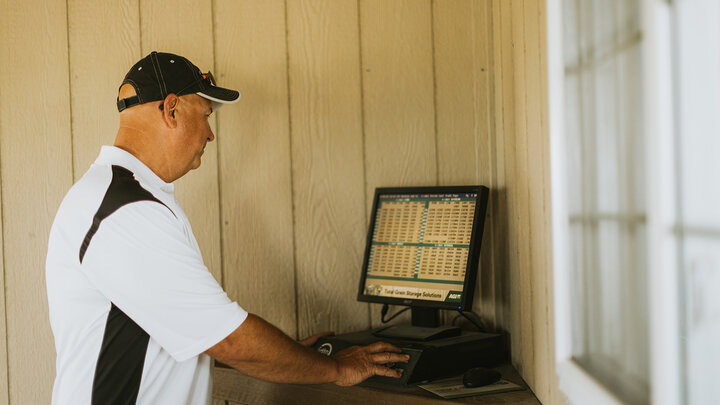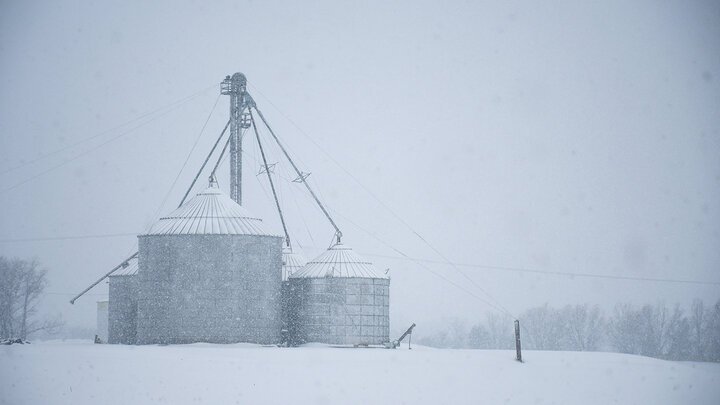This article was first published as part of the UNL Department of Agricultural series "Cornhusker Economics" on July 9, 2025. Dr. Fabio Mattos is an associate professor in the Department of Agricultural Economics.
The CME Group has recently announced an increase in price limits for its cattle futures contracts. This means that cattle futures prices now have a wider range to fluctuate on any given day, and the possibility of larger price fluctuations implies that traders may find larger gains as well as larger losses in their trading accounts at the end of the day. This is certainly something that people trading in futures markets should be aware of, but the change in price limits itself is just a regular update that happens every year. Let's take a closer look at this.
What exactly is changing?
The CME Group announced a change in the price limits for the live cattle and feeder cattle futures contracts. These changes are effective June 1, 2025. For the live cattle futures contract, the new initial price limit is $0.0725/lb (from $0.0650/lb previously), and the new expanded price limit is $0.1075/lb. For the feeder cattle futures contract, the new initial price limit is $0.0925/lb (from $0.0850/lb previously), and the new expanded price limit is $0.1375/lb.
What are price limits? Can't futures prices fluctuate freely?
Not quite, there are limits to how much the futures price can change on a given day. Price limits represent the maximum daily fluctuation allowed for a futures contract, i.e., they show how much the futures price can change (up or down) on any given day compared to the closing price from the previous day.
There are two types of price limits. The initial price limit represents the first boundary for daily price changes, which we can think of as a "yellow light" for the market. The expanded price limit represents a larger and final boundary, which can be thought of as the "red light" for the market. If the price change on a given day reaches the initial limit, then the limit is expanded, and traders know that the price is changing too much and too fast, so we might want to slow down ("yellow light"). If the price keeps changing and reaches the expanded limit, then the price has changed too much and too fast, and now trading stops ("red light"). There's a little more to it when it comes to the exact mechanics of price limits, but this is the main idea behind it.
Why are they changing price limits? Is there something wrong?
No, there is nothing wrong regarding price limits. This change is happening now because price limits are supposed to be reset every year. According to the CME Group rulebook, "daily price limits for live cattle futures are reset annually on the first trading day in June" (the same rule applies for feeder cattle futures). We can also read in the rulebook that the new price limits are based on the average futures prices “over 45 consecutive trading days before and including the last trading day in April”.
We are not getting into all the details of the calculation, but essentially, price limits are based on recent futures price behavior, i.e., recent market volatility. Price limits are updated regularly in order to keep futures markets in tune with current market conditions. Futures exchanges want to let futures prices fluctuate as freely as possible without causing damage to the market, but also want to create some "guardrails" to keep the market safe.
Why do price limits exist?
The idea behind price limits is to protect the market (and market participants) against periods of high volatility brought by increased uncertainty. By establishing a limit to how much the futures price can go up or down on a given day, the exchange aims to reduce the risk of trader default (remember that large price changes can lead to large gains and also large losses in futures markets) and diminish the effect of emotional reactions to new information.
For example, let's say that a new market report is released or breaking news shows up on traders' computer screens with new information that dramatically changes current market expectations about supply or demand for a certain commodity traded in the futures market. This will make traders reevaluate their price expectations and trade in the futures market accordingly, which can lead to large price changes given the unexpected nature of the new information. In order to avoid panic, trading will stop if the futures price reaches the limit for the day, which will give traders more time to assess the new information properly and make trading decisions rationally.
Let's remember that many futures exchanges are publicly traded companies. For example, the CME Group is listed on the Nasdaq stock market. Therefore, their objective is to make profit. Futures exchanges provide a service, i.e. they provide an organized marketplace for people to trade futures contracts on many types of assets. The more people trade, the more money the futures exchange makes. It is in the best interest of futures exchanges to have a lot of trading in their markets. Therefore, it is not good for business when there is panic, when traders lose a lot of money, or when there is trader default. Although all these events are part of life in futures markets, exchanges try to keep them at a minimum in order not to discourage people from trading. And this is where price limits come in.
A story from my old days
I worked at the trading desk of an investment bank for many years, and I remember one situation in which I witnessed price limits first-hand. This happened many years ago, during the financial crisis initiated in the “Asian Tigers” and then in Russia in the late 1990s. Now, different markets have different rules for price limits, and in this case, the rule was that trading would stop if the price limit was reached and then resume after 15 minutes.
The idea was that traders would have a chance to assess what was going on, analyze the new information properly, and then start trading again. Markets were very volatile during those times. One day, prices were going down fast, the price limit was reached, and trading stopped for 15 minutes. Once it resumed, we traded for some time, prices kept going down, and the price limit was reached again, so trading stopped for another 15 minutes. Trading resumed after the second break, prices kept falling even faster, and it was a matter of a few minutes until the price limit was reached once again, and trading stopped for the third time on the same day. The rules at that time stated that trading would stop for good if the price limit was reached three times on the same day, so we were done for the day at that point.
On that day, there was a lot of uncertainty in the market, traders were panicking, and many people were losing a lot of money. Stopping for the day and waiting until the next day to start trading again was helpful as traders had enough time to reassess their trading positions and strategies, gather more information about what was going on in Asia and Russia, and think more clearly about what could happen going forward. When the market opened the next day, there was still some tension and worry among traders, but everyone had a better understanding of what was going on, so prices didn’t fluctuate as much as the previous day, and no price limits were reached.
In practice, do price limits really help futures markets? Is there any downside to price limits?
There has been a lot of research on the effectiveness of price limits, and results have been mixed. Overall, results have differed depending on the market and the origin of increased volatility. Let me highlight this latter point. When new information creates uncertainty and market participants are not sure how much they should adjust their price expectations, price limits can be beneficial as they can prevent misinformation from spreading in the market and panic from generating even more volatility (as in my story above). Having a guardrail and some time to think about the new information can help traders come up with new price expectations consistent with the new information.
On the other hand, if market participants are able to come up with new price expectations quickly and these new expectations happen to reflect a large price change (beyond the price limit), then the price limit would just be delaying the proper adjustment in the market. Here, having guardrails will just get in the way of the market adjusting to the new information and will not reduce volatility (since the increased volatility comes from the correct assessment of new information about supply and demand). In this case, when trading stops as price limits are reached, it can become harder for some traders to unwind or update their positions, leading to additional challenges in the market.
In summary, price limits can be a useful tool to manage panic and uncertainty in futures markets. But this is not the case in all markets and in all situations. Either way, for the markets that have price limits, we want to make sure we understand how they work and remember to keep track of their regular updates.
Fabio Mattos
Associate Professor
Department of Agricultural Economics
University of Nebraska-Lincoln
fmattos@unl.edu




